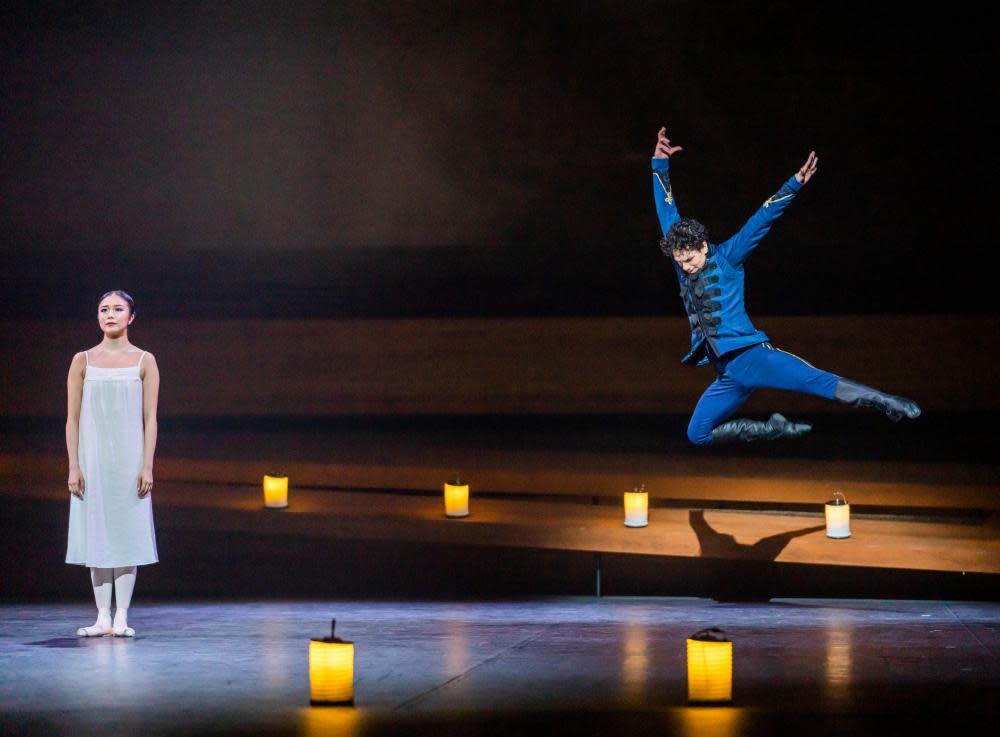Raymonda review – passion carries Tamara Rojo’s parting shot

Coliseum, London
The plot’s still a problem but the dancers give their all in the outgoing ENB artistic director’s bold attempt to bring an old classic in from the cold
One of Tamara Rojo’s early acts as artistic director of English National Ballet was to mount a production of the 19th-century classic Le Corsaire. Now, as she is about to head off to the new pastures of San Francisco Ballet, her final gift to the company she has led with such dazzling daring for a decade is her own new production of Raymonda.
Rojo loves these 19th-century warhorses, the legacy left by Marius Petipa that set the template for classical ballet. She thinks they make dancers dance better (which they undoubtedly do) and that they represent a history that must be reinvigorated but preserved. That, I think, is more debatable.
The reason that Raymonda, first seen in 1898, has fallen out of the repertory of every British dance company – though the Russians and the French continue to dance it without much worry – is a plot (invented by society author Lydia Pashkova) that was always idiotic and is now unacceptable. Set at the time of the Crusades, it features a bland, posh-girl heroine who loves the noble warrior Jean de Brienne but is pursued by an evil Saracen.
Rojo, helped by dramaturg Lucinda Coxon, has moved the action to the Crimean war. Raymonda (Shiori Kase) now leaves her family to find fulfilment as a Florence Nightingale-style nurse, and in the process finds herself torn between her feelings for her dull fiance, John de Bryan (Isaac Hernández), and his glamorous Ottoman ally Abdur Rahman (Jeffrey Cirio). Rojo preserves a lot of Petipa’s choreography, though not always in the same places, while providing linking passages herself.
At too many moments the action stops so the participants can get on with some pretty dancing
It’s clever, and at times it works. Antony McDonald provides sumptuously smart designs with a photographic theme, with frames enclosing the action and a ramp at the back of the stage down which, in a dream sequence, wounded soldiers process in agony, like an echo of the shades in La Bayadère. The costumes, all tartan cottons, swishing silks and pink candytuft, are brightly evocative.
But transposing the choreography to a different storyline keeps some of the same problems. All the time you can feel the fierce force of Rojo’s intelligence pushing against steps that are stunning in themselves but not expressive of meaning. At too many moments the action stops so the participants can get on with some pretty dancing. The plot literally gets pushed to the sides of the stage, where soldiers suffer and Rahman makes his case to be the love of Raymonda’s life. Cirio makes him sexily compelling, but he doesn’t have enough to do.
As John, Hernández scissors around the stage effectively, his charm making the most of a thankless role. Precious Adams shines as a saintly Mary Seacole figure. But though she is wonderfully fluid in her movements, Kase’s calm, delicate presence can’t provide the drama the choreography lacks; Raymonda’s decision to pursue her career rather than either man feels rushed.

The chief success of the evening is ENB’s commitment to making it work. The entire company dances with passion and precision, and Glazunov’s score, often regarded as the main triumph of the ballet, is given its full worth by the orchestra under the direction of Gavin Sutherland. Rojo is leaving her company in fine, brave shape.
Raymonda is at the Coliseum, London, until 23 January. It transfers to the Mayflower, Southampton, 30 November-3 December 2022


